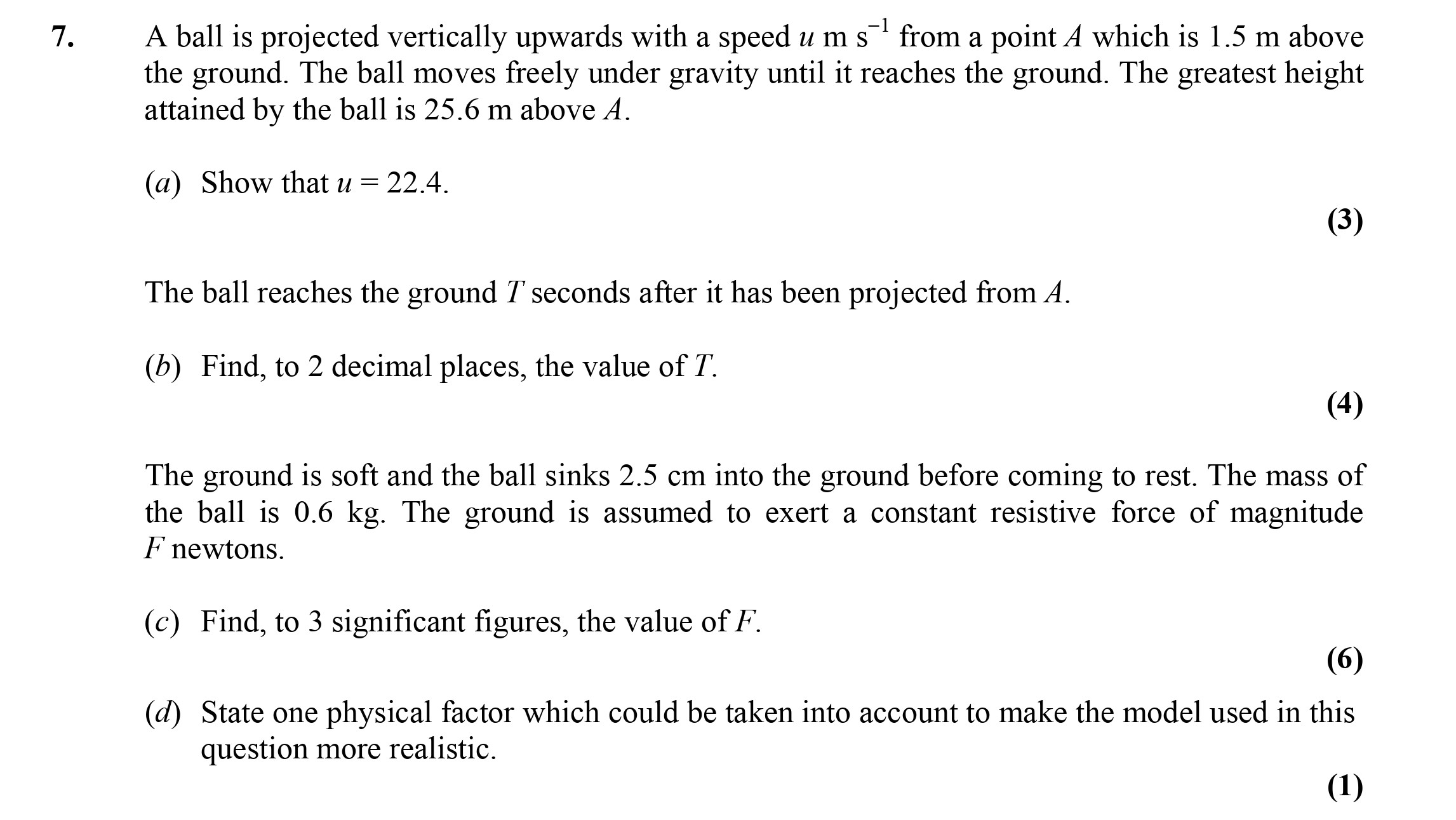Photo AI
A ball is projected vertically upwards with a speed $u$ m s$^{-1}$ from a point A which is 1.5 m above the ground - Edexcel - A-Level Maths Mechanics - Question 7 - 2003 - Paper 1
Question 7

A ball is projected vertically upwards with a speed $u$ m s$^{-1}$ from a point A which is 1.5 m above the ground. The ball moves freely under gravity until it reach... show full transcript
Worked Solution & Example Answer:A ball is projected vertically upwards with a speed $u$ m s$^{-1}$ from a point A which is 1.5 m above the ground - Edexcel - A-Level Maths Mechanics - Question 7 - 2003 - Paper 1
Step 1
Show that $u = 22.4$
Answer
To find the initial velocity , we can use the kinematic equation:
where:
- is the final velocity (0 m/s at the maximum height),
- is the initial velocity,
- is the acceleration due to gravity ( m/s),
- is the distance traveled ( m).
Substituting the values:
Calculating:
Step 2
Find, to 2 decimal places, the value of $T$
Answer
To find , we can use the formula for time taken to reach the ground:
where:
- m/s,
- .
First, find the total height from the point of projection:
m.
Now, using the equation:
Setting m (downwards, hence negative), we can solve for .
After performing calculations, we find:
Step 3
Find, to 3 significant figures, the value of $F$
Answer
The resistive force can be calculated using the work-energy principle. The work done by the resistive force is equal to the kinetic energy of the ball just before it hits the ground:
The ball sinks 2.5 cm = 0.025 m.
Using:
- where kg and using the previously found just before hitting the ground: Calculating:
Step 4
State one physical factor which could be taken into account to make the model used in this question more realistic
Answer
One physical factor that could be considered is air resistance. In reality, as the ball moves upwards and downwards, it would encounter air drag, which would require a modified model to accurately represent the motion.
